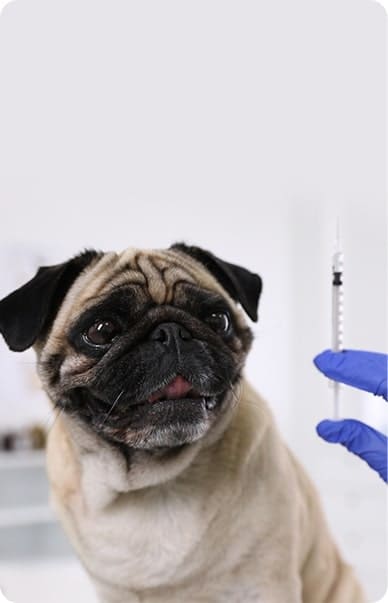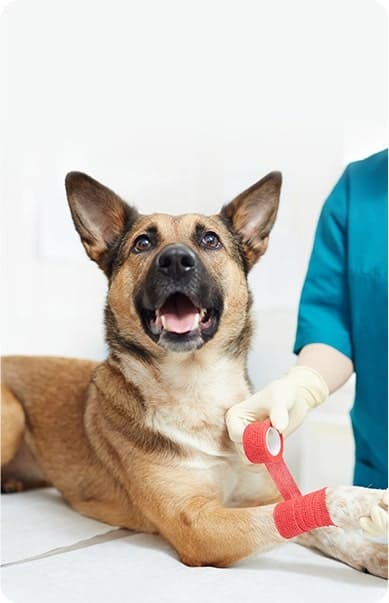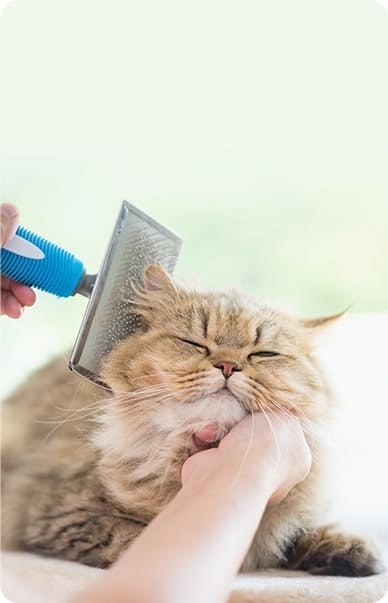HOME FEATURE
Primary & Urgent Veterinary Care
Comprehensive Care
Clear Communication
Transparent Pricing
Extended Hours
We are proud to provide veterinary care for the cats and dogs of The Woodlands and surrounding communities. Whether in need of a routine wellness exam, preventative health screening, surgery, or emergency services, we're the team to call. Get seen today.
*Located in the heart of The Woodlands
@ Research Forest Dr. & Gosling
Welcome To True Animal Vet
We deliver the highest standard quality and compassion of veterinary medicine to your furry friends along with friendly and professional care. Our #1 priority is to keep your pets healthy and happy throughout all stages of their lives.
WELCOME
Welcome To
True Animal Vet
We deliver the highest quality of modern veterinary medicine to your furry friends along with friendly, compassionate, and professional care. Our #1 priority is to keep your pets happy and healthy throughout all stages of their lives. Come meet our exceptional team of primary and urgent care veterinarians and staff committed to providing outstanding care for your pet when you need us most.
CTA
SERVICES
What We Offer
Featured Services
Walk-ins and Drop-offs are welcome!
DOCTOR
Meet The Team
Our Doctors
Meet our exceptional veterinary team committed to providing modern, high quality care for your pets.
Learn more

Dr. Nicholson
Veterinarian
Dr. Lindsay Nicholson, DVM, Director of Medicine (owner). Dr. Nicholson graduated valedictorian in her class from Texas A&M College of Veterinary Medicine & Biomedical Science in 2014. Dr. Nicholson has spent a decade practicing medicine and is an accomplished general practitioner, internist, and surgeon.
Read more
Dr. Salcetti
Veterinarian
Dr. Kathryn Salcetti, DVM, Director of Urgent Care (owner). Dr. Salcetti handles primary case management, critical care, complicated wound management, advanced imaging such as abdominal ultrasound and echocardiograms, and other general veterinary procedures.
Read more
Dr. Wolff
Veterinarian
Dr. Wolff, DVM, brings over a decade of experience in small animal medicine to True Animal Vet. A University of Illinois graduate, she specializes in preventative care, dentistry, and soft tissue surgery. She is dedicated to building meaningful relationships with clients and their pets.
Read more
Dr. Stone
Veterinarian
Dr. Charity Stone, DVM, Senior Veterinarian. Dr. Stone brings 15 years of veterinary experience in general practice to True Animal Vet. Dr. Stone graduated with her DVM from Texas A&M School of Veterinary Medicine in 2008. She is a USDA-accredited veterinarian and has been certified in veterinary acupuncture since 2012.
Read more
Dr. Carroll
Veterinarian
Dr. Kathleen Carroll, DVM, Associate Veterinarian
Dr. Kathleen Carroll, a Louisiana native, earned her DVM from LSU School of Veterinary Medicine in 2021. She specializes in Small Animal Internal Medicine, Cardiology, and Soft Tissue Surgery. Dr. Carroll is dedicated to delivering compassionate, high-quality care and building strong client relationships.

Dr. Bodnar
DVM
Dr. Nathan Bodnar, DVM, is a primary care and emergency veterinarian with a special interest in toxicology and endocrine emergencies. Dr. Bodnar has extensive experience in critical care and complex cases, having worked previously as a senior emergency clinician at BluePearl Pet Hospital in Spring, TX.
Read more
Dr. Shepard
DVM
Dr. Ben Shepard, DVM, is an emergency veterinarian specializing in surgery and critical case management. He graduated with his DVM from Texas A&M in 2019 and has since worked in emergency clinics in Conroe, TX, and Kalispell, MT, gaining extensive experience in high-stakes cases
Read more
Dr. Hurst
Veterinarian
Dr. Codee Hurst completed her Doctor of Veterinary Medicine at Texas A&M University, College Station, and further specialized with an internship in Small Animal Medicine & Surgery at North Houston Veterinary Specialist. Dr. Hurst brings valuable experience from her time as an emergency veterinarian at Blue Pearl, Spring, where she managed critical cases with precision and care. Her background also includes extensive work in relief medicine, providing her with broad exposure to both general practice and emergency situations.
Read moreREVIEWS

Patient Reviews
What Our Pet Owners Say
"If you have pets near The Woodlands and want them cared for like family, then take them to True Animal Vet. I would drive 2 plus hrs or more to have my Rhodesian Ridgebacks cared for by them. If your pet is sick, having a litter or just regular check ups and nutritional advice you will be blown away by the knowledge, support, and caring atmosphere that puts your pets needs first and foremost.!"
By Brandon
Read more
"We took our Toto to True Animal Vet yesterday for his annual check-up. Dr. Nicholson and her staff were truly amazing, very professional and took the time to listen to our concerns. Our former vet had to muzzle our dog to take blood and administer shots. Not True Animal Vet. They were so loving toward Toto and put him at ease. The office was very clean and inviting. We didn't have to wait in a crowded waiting area with other pets, which usually causes Toto anxiety. So glad we found True Animal Vet!"
By Barbara
Read more
"True Animal Vet "True"ly lives up to its name. My review will not justify how amazing this veterinarian clinic is, you should definitely see for yourself. Dr. Salcetti, an absolute joy to work with and true blessing is clearly a highly experienced veterinarian stepped in tradition and excellence. She is genuinely dedicated to quality care and is patient, attentive, honest, informative and extremely knowledgeable. She exceeds expectations and is excellent at listening and communicating. The entire staff are all friendly and very helpful. The facility is welcoming and very clean with advanced technology that many local facilities do not have available. True Animal Vet has also always been quick to accompany my appointment request and is very reasonably priced for their services. We are beyond grateful for Dr. Salcetti and the staff at True Animal Vet clinic and highly recommend them; I can assure you that you will not be disappointed with the veterinarians, staff, facility, or pricing."
By Chris
Read more
"Our pup took a fall and was acting strange and we were so worried. After a nearby urgent care refused to see us at our appointment time, we were desperate to find someone to examine him. We called True Animal Vet and they told us to come right over. They took him back and got us answers immediately. They were empathetic, lovely, and knowledgeable. Thank you SO much!"
Client, The Woodlands
Read more
"I have been there twice with our new fur family member. Once for a sick visit and another surgery. Both have been outstanding. The staff is friendly and knowledgeable. The prices are reasonable. The office is so clean and up to date. I was going to another vet, but it is much farther. This will be our new vet!"
By Susan
Read more

Contact Information
| 4524 Research Forest Dr. The Woodlands, Texas 77381 |
| Clinic Hotline(281) 867-5968 |
| Text Us(281) 916-3282 |
Clinic Hours
| Monday | 7:30am - 9:00pm |
| Tuesday | 7:30am - 9:00pm |
| Wednesday | 7:30am - 9:00pm |
| Thursday | 7:30am - 9:00pm |
| Friday | 7:30am - 9:00pm |
| Saturday | 8:00am - 12:00pm |
| Sunday | Closed |
© 2025 True Animal Vet | All Rights Reserved | Privacy Policy | Sitemap








